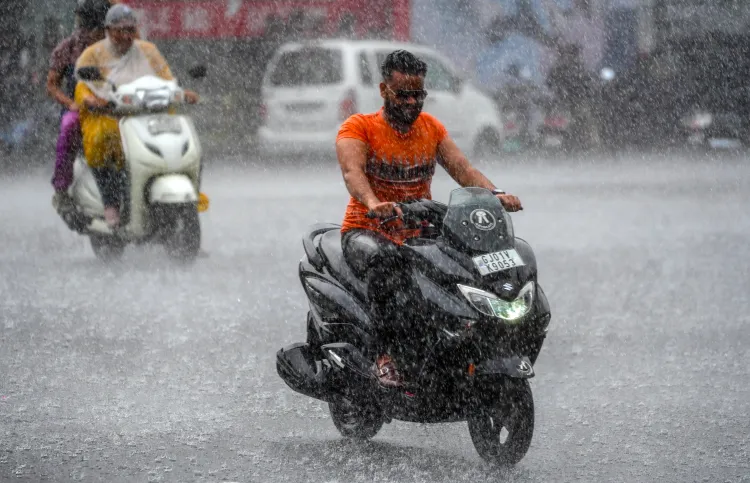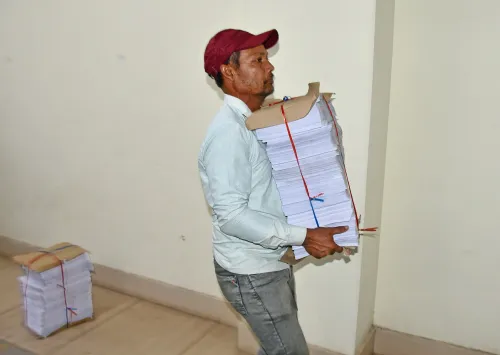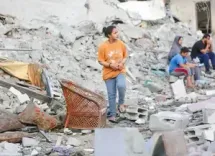What Happened in Daskroi Taluka with 10 Inches of Rain?

Synopsis
Key Takeaways
- Daskroi taluka received a remarkable 10 inches of rain in 12 hours.
- The state has reached 58 percent of its seasonal average rainfall.
- Local authorities are on high alert for potential flooding.
- Emergency shelters and resources are being provided.
- Residents are encouraged to stay updated through official channels.
Gandhinagar, July 27 (NationPress) Gujarat is experiencing a significant surge of monsoon rainfall, with intense showers reported across various parts of the state. The most substantial rainfall over the past 12 hours was documented in Daskroi taluka of Ahmedabad district, which saw 10 inches of rain from 6:00 AM to 6:00 PM on Sunday.
According to the data provided by the State Emergency Operations Centre (SEOC) in Gandhinagar, several additional areas also experienced considerable downpours.
Nadiad and Mehmedabad talukas in Kheda district recorded over 8 inches of rain, while Matar taluka received more than 7 inches. Other talukas such as Vaso, Mahemdha, and Kathlal experienced rainfall exceeding 5 inches.
Furthermore, Umreth in Anand and sections of Kheda taluka noted approximately 4 inches of rainfall. Rainfall between 3 to 4 inches was documented in 8 talukas, whereas 18 talukas received over 2 inches, and 30 talukas recorded rainfall surpassing 1 inch.
A total of 112 talukas registered less than 1 inch of rainfall during this time period. As of 6:00 AM today, the state has attained 58 percent of its seasonal average rainfall, with Kutch leading at 64 percent, while Central Gujarat and Saurashtra reported the lowest at 54 percent.
As the monsoon strengthens, local authorities are diligently monitoring the conditions, particularly in low-lying areas susceptible to waterlogging and flash floods.
The state government has advised residents to stay informed through official weather updates. With the monsoon intensifying across Gujarat, the government has enhanced its preparedness and response strategies to alleviate any potential negative effects.
The State Emergency Operations Centre (SEOC) is actively observing rainfall data and ground reports from all regions. Disaster Response Teams, NDRF units, and local authorities have been put on high alert, particularly in low-lying and flood-prone locations.
Control rooms have been set up across districts for real-time coordination, while drainage systems and areas prone to water-logging are under close supervision. The government has also ensured the provision of emergency shelters, food packets, medical teams, and 24/7 helplines.









